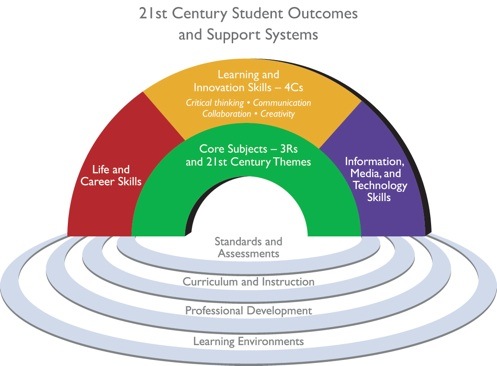by Janine Schall, University of Texas-Pan American, Edinburg, TX
I hope that through reading the previous four blog posts you became more aware of available technological resources for literacy classrooms. In this last blog post for November, I will briefly discuss some challenges facing teachers who want to use 21st century technological tools in their classrooms. I end with some online and print resources for those who want to explore these issues further.
Thoughtful Use
It is important that teachers not be intimidated by these tools, but it is also important that we bring them into our classrooms thoughtfully. We don’t use technology because it is new, or fun, or trendy, we use it because it helps our students learn what they need to learn in order to thrive in today’s reality.
When I first use traditional strategies in my classes such as sketch to stretch or graffiti boards I always emphasize that the point of these response tools is not to draw pretty pictures, but to support thinking about literature. When used poorly, sketch to stretch can be a time wasting way to play with markers. Used correctly, it is a powerful thinking tool. It is the same with 21st century tools; they must be framed in ways that emphasize learning.
As well, we need to help our students become critical users of technology, just like we help them be critical readers of literature. We cannot bring in these technological tools without carefully thinking about how to make our students thoughtful, critical creators and consumers.
Access to Resources
Physical access to resources is a real problem for many districts. Computers are expensive. Fast internet is expensive. A bigger problem, though, is lack of knowledge about these tools. Some teachers are intimidated or overwhelmed by these tools; others just don’t feel knowledgeable enough to use them with students. Finally, many school districts are putting up barriers to these resources; in my area many districts have placed Youtube behind a firewall, even for teachers. At least one district has forbidden teachers to show any Youtube videos, even if it’s been downloaded onto a pin drive so there is no access to Youtube from the school computers. I’ve been told (though I haven’t checked to see if this is true) that in Texas teachers are not allowed to have any students as friends on social networking sites. It has now been made a violation of the ethical code of conduct.
Lack of access, of course, means that educators will not integrate these tools into their teaching repertoires, and that’s a disservice to our students. Given that youth culture is thriving within technology, some may assume that it doesn’t matter if schools use these tools because kids are going to learn them anyway. That’s wrong. As the divide between in-school literacy and out-of-school literacy grows wider, how many students will disengage? And how will we be sure that students grow up to be critical consumers and producers? Finally, what about the students who won’t “learn it anyway” because they don’t have access to technology anywhere outside of school? While these tools aren’t replacing basic literacy skills, they are expanding the whole notion of what it means to be literate, and students who don’t have access to these tools either in or out of school will lose out on important conceptual knowledge.
There are some very real concerns with using 21st century tools in the classroom, especially if teachers choose to use public sites. Issues of privacy are paramount; any time you use a tool that involves public sharing of work, think carefully about who can see it, who you will allow to comment on it, what types of comments will be allowed, whether or not the student work can be shared beyond the original website, and how you can control all of these things. Nonetheless, I see many of the restrictive policies as massive overreactions to emerging technology. I hope that as people become more informed, more thoughtful policies will emerge to deal with these concerns in ways that encourage technological use for educational purposes.
Where Do I Start?
There are many resources available to provide more information and support:
The Partnership for 21st Century Skills. is an organization devoted to promoting 21st century readiness for every student. See their framework for learning.
There are numerous online resources. While putting together this blog series I ran across this prezi, which discusses Web 2.0 in the classroom, including a number of tools I didn’t talk about in this series. Wikispaces also has information on using wikis in education. You may also be interested in these blogs and websites:
Of course, there are print resources as well. Here are a few books to start you off.
- •Digital Literacies: Concepts, Policies and Practices edited by Colin Lankshear and Michele Knobel. Peter Lang, 2008.
- •Rewired: Understanding the iGeneration and the Way They Learn by Larry D. Rosen. Palgrave McMillan, 2010.
- •Teaching Vocabulary with Hypermedia 6-12 by Susan O’Hara and Robert Pritchard. Allyn & Bacon, 2009.
- •Web 2.0 for Schools: Learning and Social Participation by Julia Davies and Guy Merchant. Peter Lang, 2009.
There are many more resources out there! Please share your favorites in the comments section.
Journey through Worlds of Words during our open reading hours: Monday-Friday, 9 a.m. to 5 p.m. and Saturday, 9 a.m. to 1 p.m. To view our complete offerings of WOW Currents, please visit archival stream.
- Themes: 21st century technology, Janine Schall
- Descriptors: Books & Resources, Debates & Trends, Student Connections, WOW Currents


One thought on “Responding to Literature in the 21st Century: Challenges and Resources”